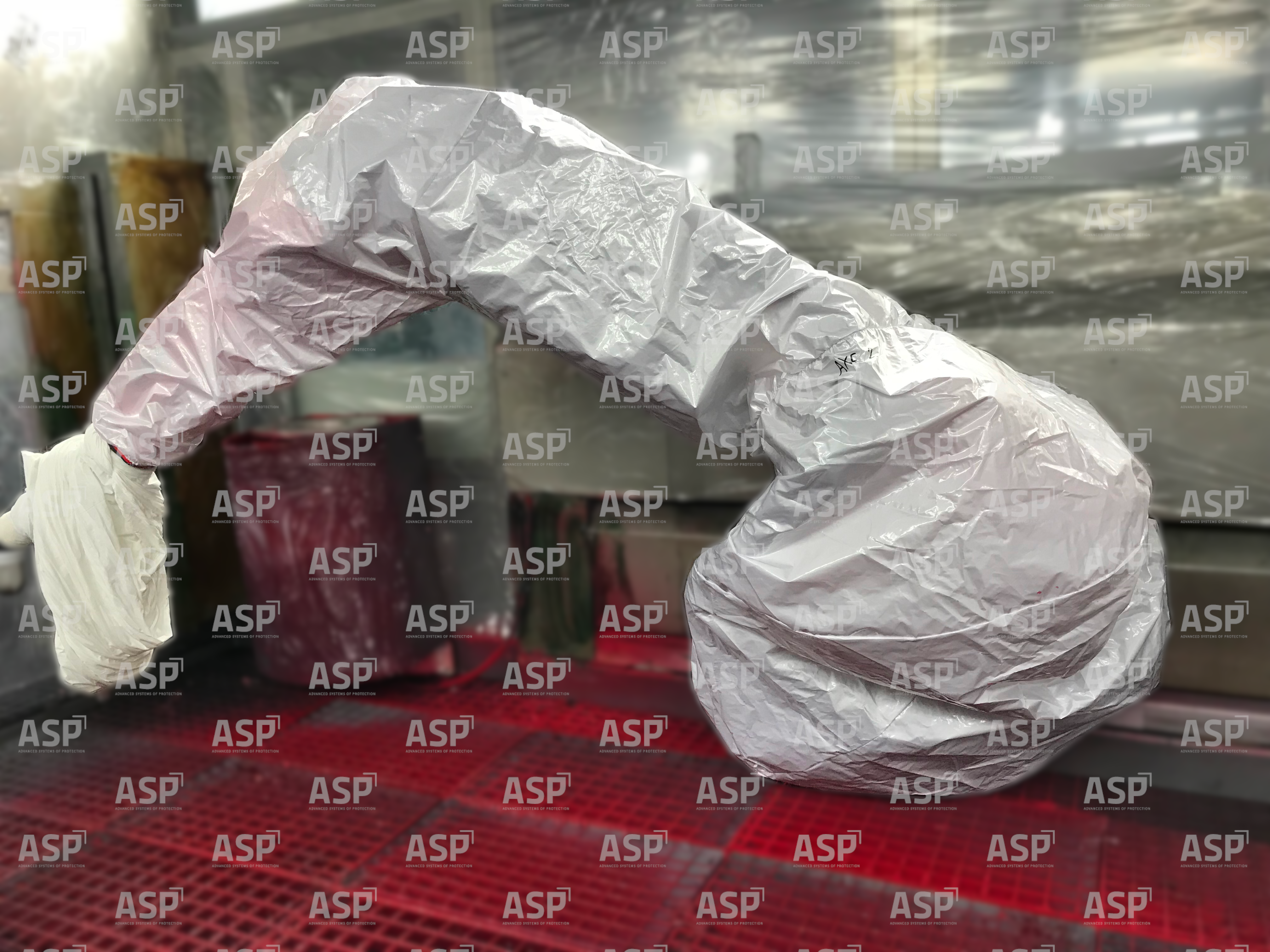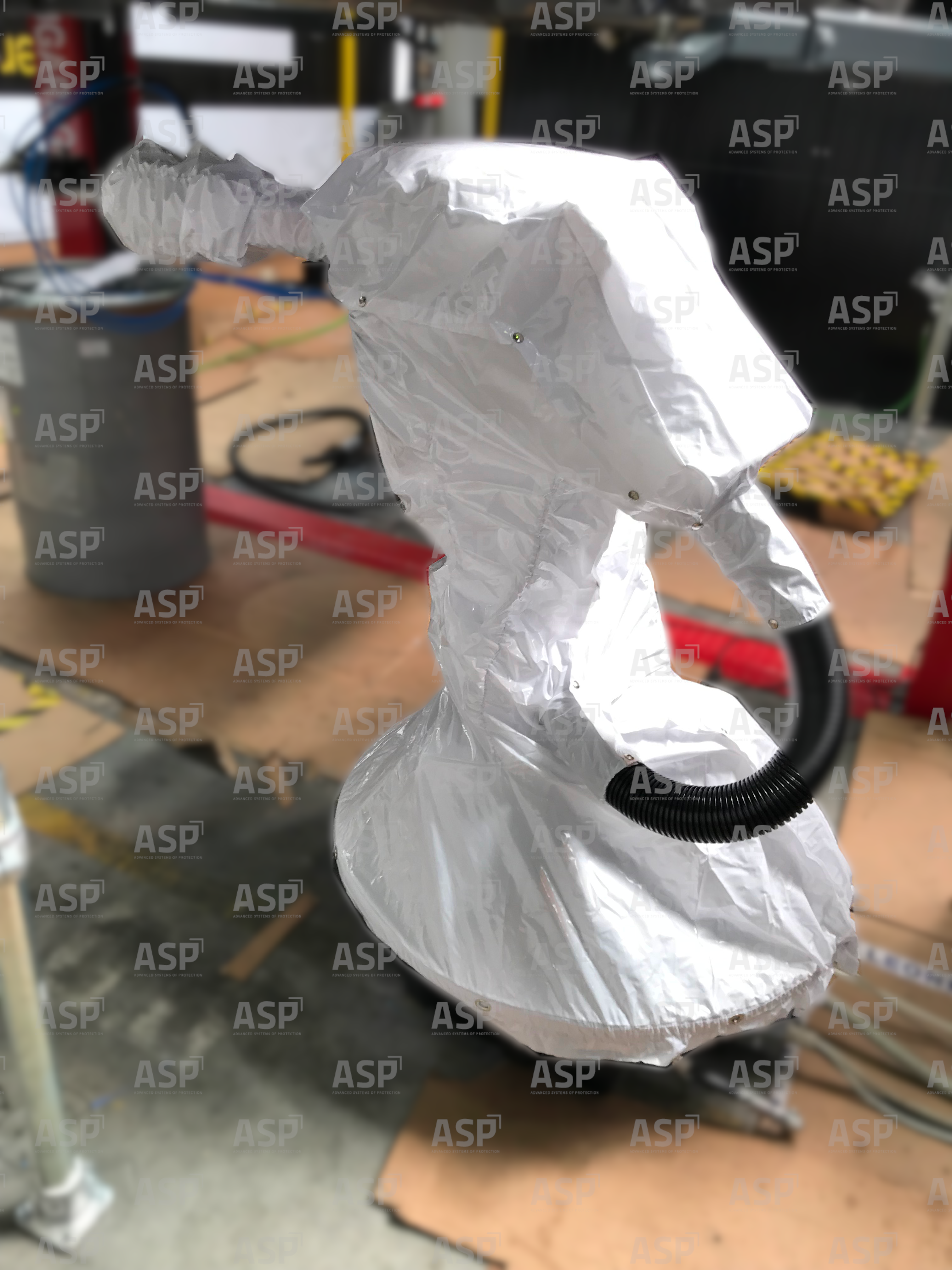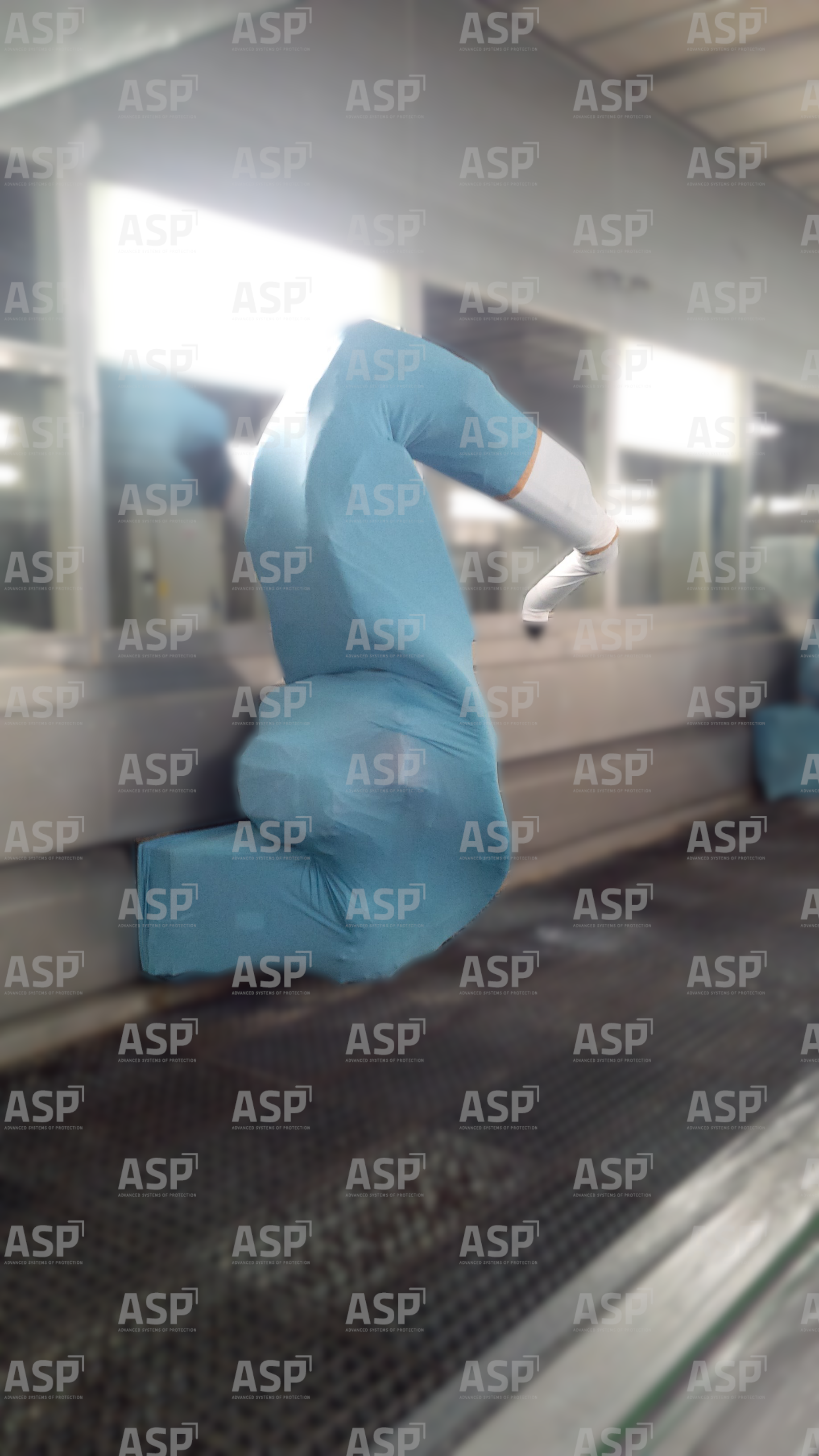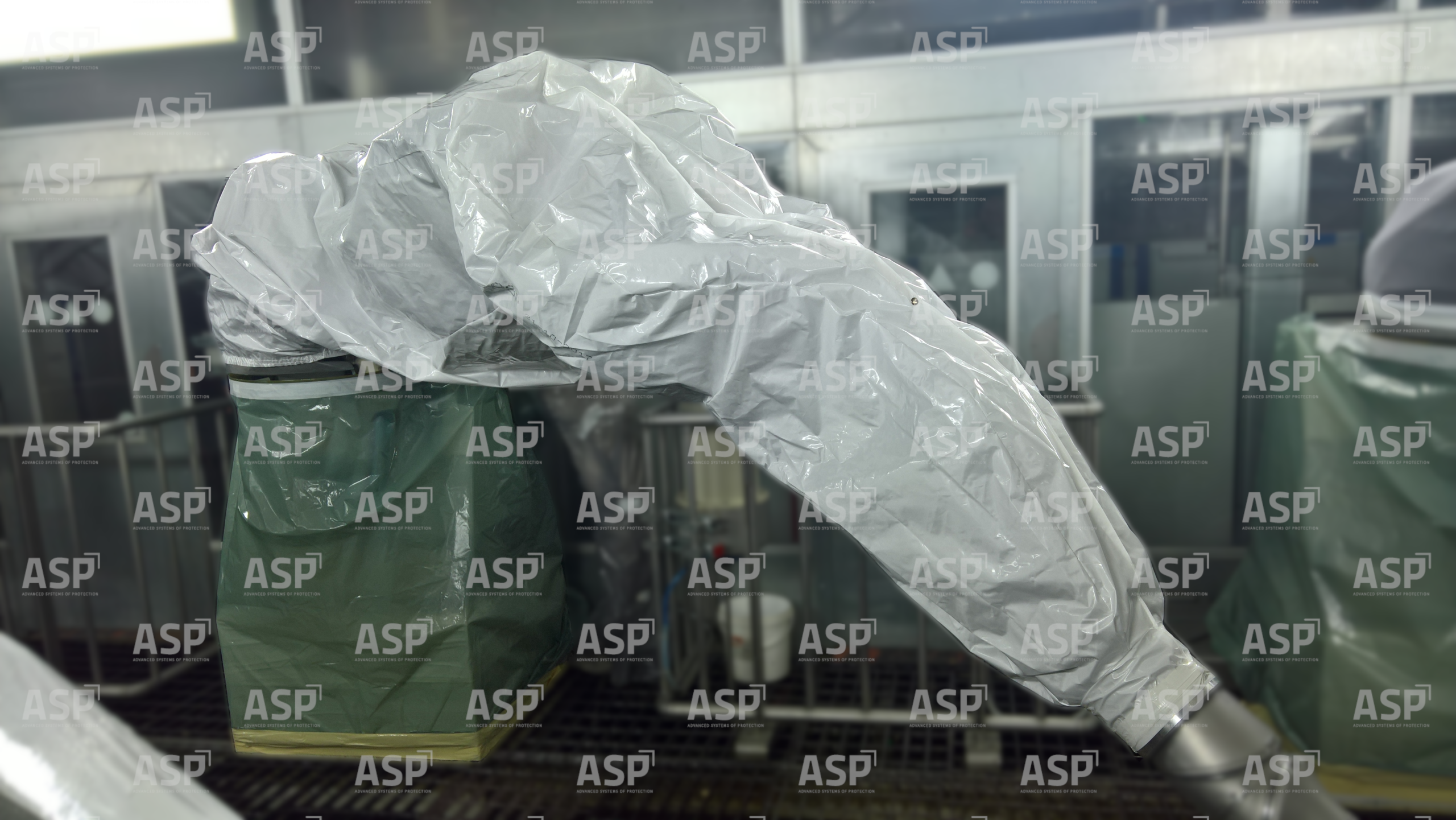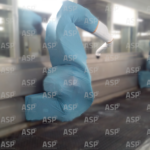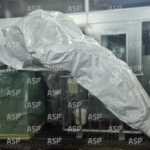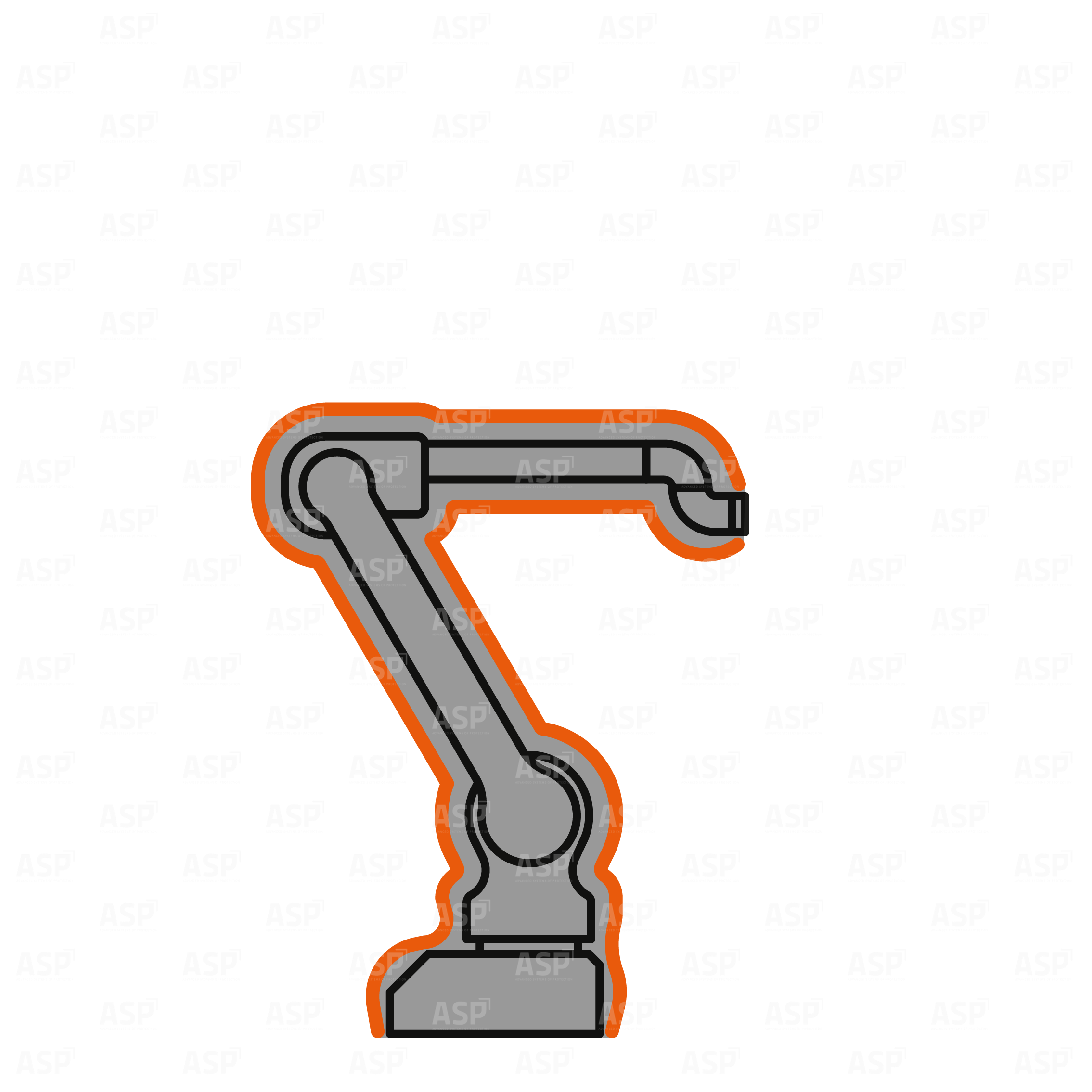These disposable protective covers for paint robots are used in paint and varnish workshops, but they are also suitable for applications such as underbody wax/plastic filler (TSB13 or FPB fabrics).
In order to avoid robot malfunctions on the paint line and prevent high maintenance costs, robot protection is essential in these types of applications.
The polyamide or polyester-based fabrics that we use to manufacture the paint robot covers are silicone-free and ATEX-certified for paint (sleeves). Our range of disposable sleeves includes the following materials: F770I / F770Y / F750 / F700 / F530 / F350 / F200 / F205 / F190 / F100.
These various widths provide suitable protection for all types of paint robots, manipulators, or opening robots.
